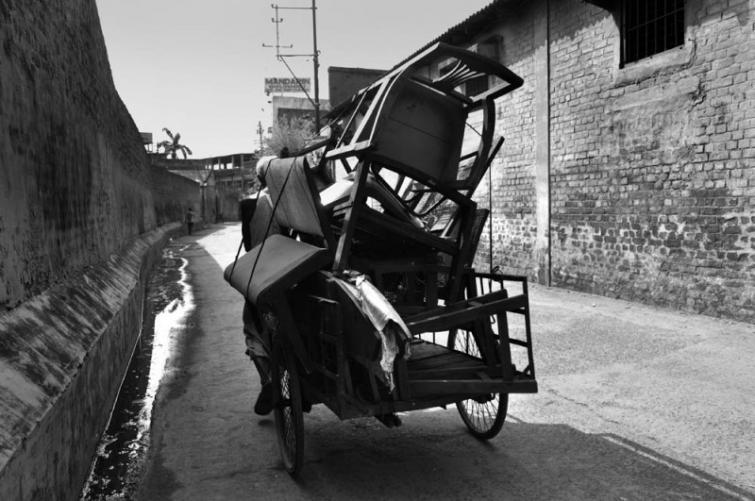
Lensman Bijoy Chowdhury's documentary Khwato or The Wound winning global acclaim
Kolkata, Feb 17 (IBNS): Kolkata-based photographer, Bijoy Chowdhury known for his graphic images of people and the world around them, has turned his camera to record the annihilation of urban memory through his documentary film Khwato.
Meaning 'The Wound' in Bengali, Khwato portrays how the demolition of an old residential building is not merely a physical blow but also a gaping wound of memories that once made the house 'a home'.
Lensman Bijoy Chowdhury, who has been working on various aspects of Calcutta/Kolkata for the past 35 years,
has chronicled the process of how a city’s urban legacy can be wrecked by choosing to document the fate of one such house.
.jpg)
Every blow that demolishes the nondescript Kolkata house, chunk by chunk, razing to dust a part of our social heritage, forces the viewer to flinch at the destruction it leaves behind.
The film has been globally acclaimed and selected/showcased in several international film festivals through 2018.
.jpg)
It was selected for the 11th International Documentary & Short Film Festival of Kerala.
It featured in the competition section of the SiGNS 2018 festival, Kerala.
The film won the first prize (Best Documentary ) at 6th Siliguri International Short and Documentary Film Festival.
.jpg)
It earned a Special Mention by the jury at the competition section of FICARQ 2018, Festival Internacional de Cine y Arquitectura, Madrid, Spain.
The film was featured in the competition section of the 12th Istanbul International Architecture and Urban Film Festival as well as in the 7th Universal Kids Film Festival at Istanbul, Turkey
This year, the film has been selected at the Culture Of Life Film Festival 2019, Memphis, US.
.jpg)
Chowdhury has not been content in documenting the loss.
He has delved into the human side of this destruction. He has captured the forced rejection of memories that were once dear to us.
The heart-wrenching demolition of a house he captured belonged to his friend who later settled abroad. And he captured more than just demolition of the house.
.jpg)
“The film intends to hold the intuitive knowledge of how to frame them to provide more than a documentary of the changes in the urban fabric and its displaced inhabitants that once gone will never return, and the mysterious beauty of the man-made ruins that mark the transition from the Calcutta of authentic tradition to the so called new ‘modernity’,” said Chowdhury.
Support Our Journalism
We cannot do without you.. your contribution supports unbiased journalism
IBNS is not driven by any ism- not wokeism, not racism, not skewed secularism, not hyper right-wing or left liberal ideals, nor by any hardline religious beliefs or hyper nationalism. We want to serve you good old objective news, as they are. We do not judge or preach. We let people decide for themselves. We only try to present factual and well-sourced news.






